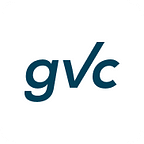Members of the GoingVC Flagship Venture Capital Program have the opportunity to develop complete investment theses that are reviewed by VCs and our internal Venture Advisors. To provide actionable feedback, we have partnered with seasoned VCs to create a grading rubric. We use these theses and the Investor Program as a way to provide cohort members the hands-on experience they need in order to gain the skills and experience required to break into the Venture Capital Industry. Below we also share three full investment theses for you!
You Don’t Need to be a VC to do VC Things
Generating an investment thesis is a hallmark of being a Venture Capitalist. If there are four buckets we can define as the common skills and regular duties of a VC, they’re likely grouped as such:
- Sourcing and Performing Due Diligence
- Building Relationships with Portfolio Companies
- Managing the Fund Operations
- Raising Funds from LPs
The Venture industry is unique in that many of the skills and duties that new hires are expected to perform can actually be learned on your own. For example, anyone can research industries and companies, develop opinions, and even reach out to founders to practice performing due diligence. The same can be said even for making investments. With the introduction of Reg-CF and platforms such as Republic and other crowdfunded and non-accredited investor-based platforms — investors can now invest as little as $100 into startups and build and manage a portfolio. For accredited investors, getting started as an Angel Investor has never been easier.
One of the best ways to develop these skills is researching companies and creating investment theses or memos. Doing this routinely and building a library of theses is a powerful way to show VC funds that you’re both willing and able to take on the responsibilities of being a VC from day one.
That’s why we’re sharing the grading rubric we’ve developed with our Venture Advisors and seasoned VCs within our global network. Anyone can use this rubric as a guideline to developing their own thesis — and if you’re looking for a template to start with, you can download ours here.
Making the Grade: Our Rubric
We identified five critical elements to developing a robust Investment Thesis:
- High-level summary
- Market Overview
- Segmentation
- Potential Deals
- Organization and Formatting
Below we describe each section in more detail and explain what separates the good from the bad when it comes to content.
High Level Summary
A great thesis presents a unique and compelling view of the industry based on analysis and synthesis of trends in the space. Included in this is an accurate description of the high-level changes in the space with several relevant metrics that describe the key trends in the industry such as CAGR and recent funding trends.
Market Overview
The thesis must clearly and poignantly detail the problems in the market, their causes, and the size of these problems based on analysis and synthesis. This is done best when there is a strong story embedded in the problem and potential solutions: the who, what, why, and how are clearly identifiable and actionable.
Segmentation
A detailed breakdown of the market landscape and competitiveness using a top-down or bottom-up approach. Major competitors and basic SWOT analysis are critical to understanding the dynamics of the industry (and therefore opportunities).
Potential Deals
Every thesis must include interesting startups and potential deals based on opportunities given the previously mentioned problems and level of competition. It’s not enough to simply identify those working to solve the problems in the space, but those companies that present the highest probability of success and why. Bonus points if startups are currently fundraising!
Organization and Formatting
Last but not least, in the chaotic and fast-paced environment of startups and VC, brevity, clarity, and formatting are critical. Information needs to be presented in a logical and interesting sequence and flows well, form high level summary through potential deals.
Examples
Here’s three examples from our last Cohort to get you started! Happy Unicorn hunting!
- Embedded Financial Empowerment (#FinTech)
- Institutional CRE Data & Tech Thesis (#PropTech)
- The Professional and Amateur Sports Industry (#SportsTech)
Looking for more help on the topic? Subscribe to GoingVC and join the more than 10,000 people who get Venture Capital news, research, jobs, and investment opportunities delivered straight to their inbox.
